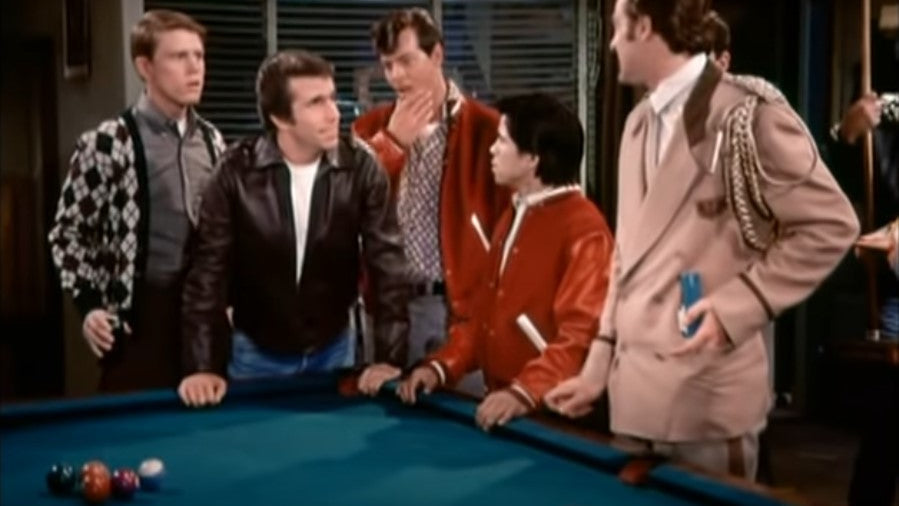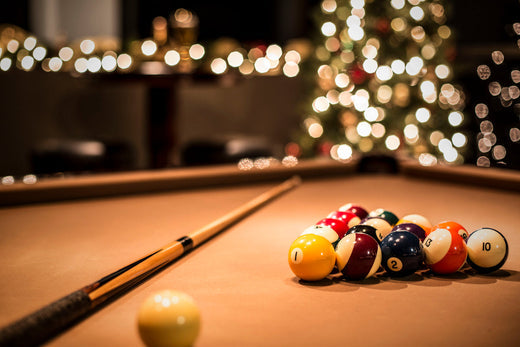
Stats and Facts
- Pool evolved from a lawn game that is similar to croquet, which is likely why the pool table is green (to represent the grass).
- The word ‘cue’ comes from the French word ‘queue’. Billiards was originally played with a mace, which made shots difficult if they were close to the guard rail, so players would turn the mace around and use the narrow ‘queue’ (which means ‘tail’) end.
Pool is considered one of the safest sports in the world. - “Pool” is originally a gambling term, one that is still used today — for example, the office ‘football pool’. In the 1800s, a ‘pool room’ was a place for betting on horse racing, and billiard tables were used so patrons could entertain themselves by playing games between races.
- Wool has been the primary fabric used in making billiard cloth for over four centuries.
- Legend has it that Thomas Jefferson’s Monticello home in Virginia contained a hidden billiard room, as they were illegal in the state at that time. Monticello however, refutes this claim, stating that Jefferson frowned upon activities such as billiards and that they were never outlawed in Virginia while Jefferson was alive.
- The term “scratch”, when a player accidentally pockets the cue ball, comes from the early days of pool, where the penalty for such an action resulted in a point being ‘scratched’ off the players’ score.
- In the movie The Color of Money, from 1986, Tom Cruise performed nearly all of his trick shots.
- At 35.6 years, billiard champions have the highest average age of any sport.
- In 1873, Billiards became the first sport to have a world championship.
- The patent for the first coin-operated table was awarded in 1903, which enabled players to play a game for one penny.
- Before modern plastics such as celluloid were invented, billiard balls were made out of ivory, and needed to be cut from the exact center of a tusk. Only three or four balls could be made from a single elephant tusk.
- The leather cue tip was invented by Captain Mingaud, who was a political prisoner during the French Revolution. He was able to have a billiard table installed in his cell, and fell in love with the game. When it came time for his release, he asked to remain in prison for a longer duration, so he could continue to play.
- When Mary Queen of Scots was killed in 1586, the cloth from her billiard table was used to cover her body.
- The first billiard room was built in England in 1765.
- The largest billiard hall in the world was built in Detroit in the 1920s. Called The Recreation it sported 103 billiard tables, 88 lanes of bowling, twenty barber chairs, three stands for manicuring, fourteen cigar stands, a 300 seat restaurant, an exhibition room with theater-style seats for 250 guests, and a lunch counter on every floor.
- The beauty of pool tablesand cues owe a big debt to marquetry, which is the centuries-old art and craft of applying thin slices of wood to a structure to form decorative patterns, designs or pictures.
- Since close to its inception, the Church has been harshly critical of pool, denouncing it as an activity for the sinful and morally bankrupt. In 15th century France, the King and the Church prohibited billiards play. Likewise, in the early days of American history, laws reflected the views of the Church and consequently billiards play was illegal in many areas.
- The first known billiard table in recorded history comes from a personal inventory of the French King Louis the XI. The inventory describes a bed of stone, a cloth covering, and a hole in the middle of the playing field, into which balls could be driven.
- The term “behind the eight-ball” is derived from pool. In many pool games, the player will lose if her cue ball hits the eight-ball first. If the cue ball is right behind the eight-ball, this makes for a difficult shot and the player could easily lose the game.
- When a player makes a shot that bounces the ball off the side rail, this is called a “bank shot”. The reason for this is because in the early days of billiards, the tables featured rails that were flat walls and looked like riverbanks. They were therefore called “banks”.
- A “masse” shot is a shot made by hitting the cue ball with the cue held nearly vertically, so the cue ball spins around another ball before hitting its intended target ball. Many pool halls have banned this shot because it’s possible to rip the cloth covering the table.
- An “English” shot is the term used for putting spin on the ball, whereas in Britain this is called a “side” shot. While visiting USA, English players showed the spin shot to American players, hence the term’s use in America.
- It is said that during the American civil war, billiard results were given more coverage than war news, and that players were so famous, cigarette cards were made featuring them.




